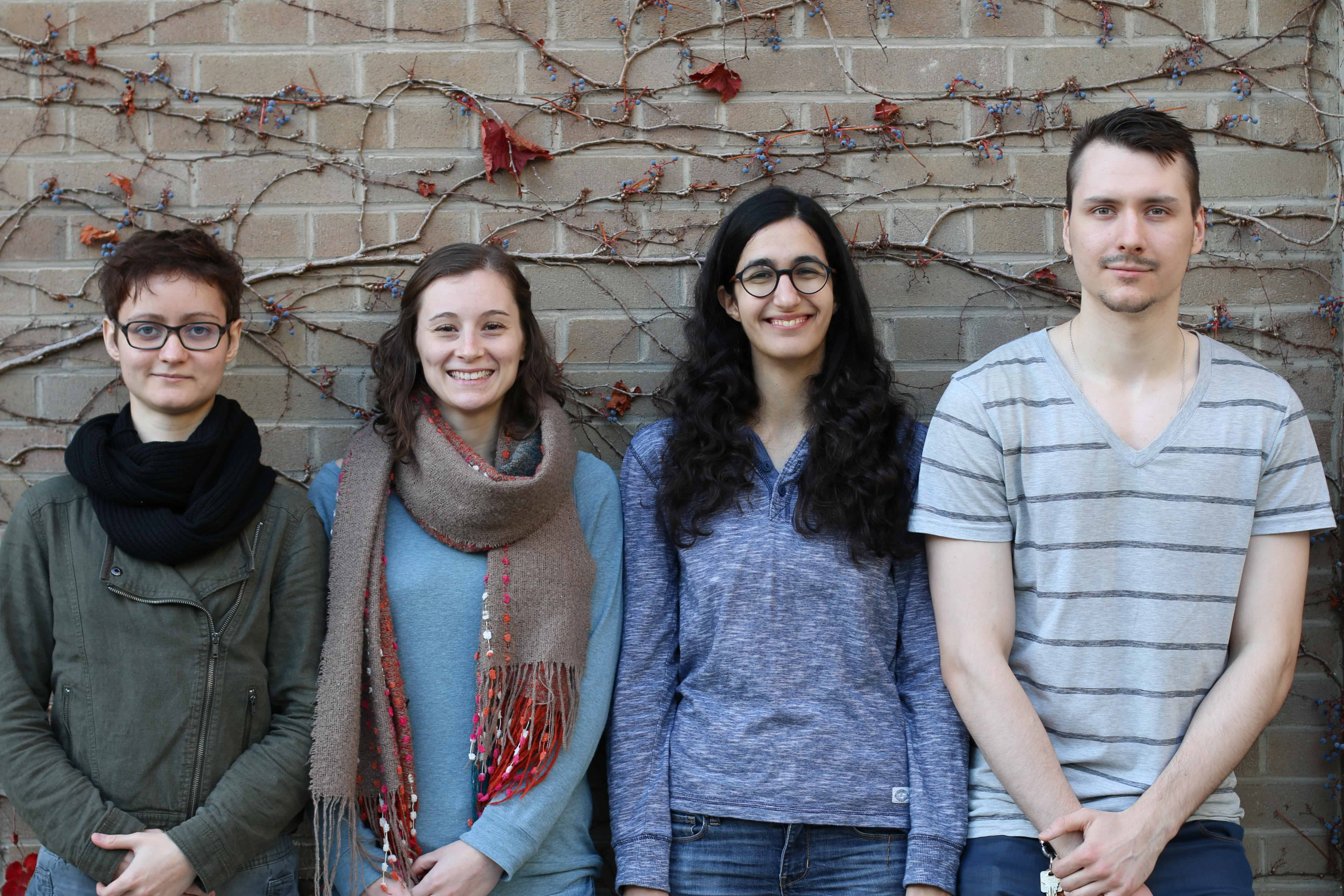How do we visualize the shape of a molecule when it is just billionths of the size of a metre? The answer can have enormous implications for research in a vast array of areas — from drug development to solar cells. However, before we can even begin to design a solar cell or get a drug to do something new inside the human body, we need to understand the very basic ways in which these very small objects, or ‘nanoparticles’, act under specific conditions.
Needless to say, visualizing an object that is too small to even be seen by a microscope is no easy task. That’s why U of T’s post-doctoral fellow Rachelle Choueiri teamed up with a group of physicists who specialize in materials and a type of powerful imaging tech known as “electron tomography” to unearth the most fundamental behaviour of the elusive nanoparticle. The groundbreaking results of Choueiri’s research were published last month in Nature.
We spoke to Choueiri to find out what secrets of polymers earned her research a spot in one of the most prestigious science journals. She explained the ingredients of her research. First of all, we need a rounded object. In this case, Choueiri used a very small sphere made entirely out of gold, which is a pure substance, but more importantly, it can be made perfectly spherical on a tiny scale.
Secondly, we need our object of study, which is a string of molecules. The general term that biochemists use for molecules linked together in a chain is a ‘polymer.’
To help imagine what such a chain of molecules would look like, think of it as not too different from a string of hair, although the polymers Choueiri is working with are thousands of times smaller than the width of a human hair.
“Imagine a dog’s fur coat just when it comes out of the water,” said co-researcher Oleg Gang from the Brookhaven National Laboratory in New York during an interview with Science Daily. “Based on the length and thickness of the hair, or the shape of the dog’s body, it will clump in very different ways. Our polymer morphologies are a bit like that, where you have a huge range of ‘breeds’ that emerge when wet. The key difference, beyond the scale, is that the patch patterns change the structural properties of the nanoparticles.”
Usually when this patchiness is observed in polymers, the polymers are of a type that reacts to mixtures of different types of liquids. “That means it’s a polymer with like, two personalities, one likes water, and one likes oil, for example,” Choueiri explains to us. “And this we can kind of control based on our solvent, how they look.”
Now, for the first time, the team has observed an uneven pattern of patches emerging in polymers that are chains of one type of molecule that likes one type of substance. If we were to imagine a picture of the object, it would look like a perfectly round sphere, with big bumps on it that are actually clumps of long chains of objects, just like how dog hair will clump together on a dog’s skin.
Thanks to electron tomography however, we don’t have to imagine the polymer clumps. The technology used by Choueiri is an advanced type of imaging that takes pictures of incredibly small objects from multiple angles. The result is a three-dimensional image that shows exactly what shape the clumps of polymers are making. It is thanks to this visualization that the researchers were able to definitively prove their results.
Choueiri says that it may be “the first time that homopolymer [a polymer that only likes one liquid] segregation has been visualized in this way.”
The study of polymers is important to drug development, because in a manner of speaking, you can use them to help ‘deliver’ drugs to the part of the body that they are supposed to be acting on, for instance a tumor.
“Potentially you could put organic molecules inside the polymer bushes [as cargo],” Choueiri says. “For example, if you’re trying to send something in the body as a stealth molecule and then you have the polymer molecules that are supposed to protect the cargo inside, if they’re segregating in the body then actually parts of it are exposed, and this leads to something called ‘non-specific attachment’ which is really bad.”
The idea is that the shapes that the patches of polymers make on a round surface can be used as a sort of code for the body, as the patches are unevenly distributed. Thanks to Choueiri’s research, we now know more about how this happens, why it happens, and under which biological circumstances.
Choueiri comments on how her work helps us understand in more detail how these very small, but very useful particles behave, and also how her work is useful to the rapidly developing world of biology and medicine:
“We’re chemists who stumbled upon something which is fundamentally interesting and interesting from an application standpoint,” she says.


